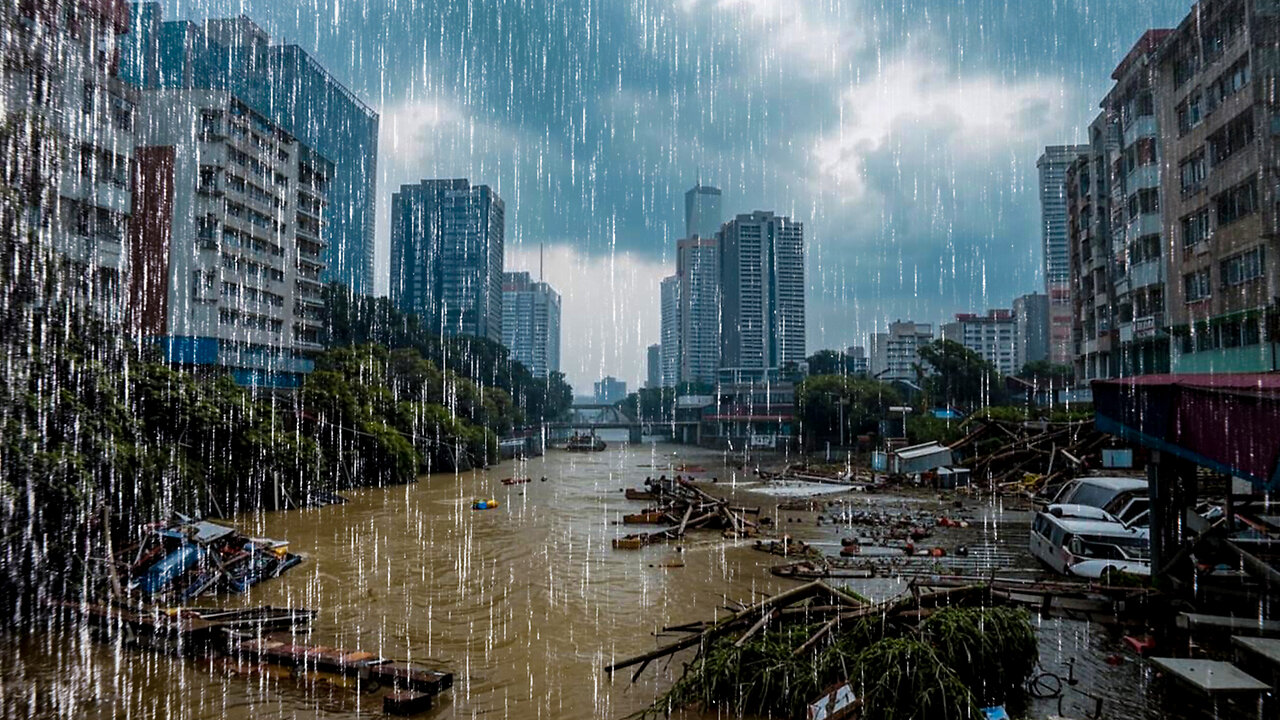Premium Only Content

Taiwan NOW! Historic Typhoon Kong Rey: Record Winds, Floods, and Blackouts
Super Typhoon Kong-Rey struck the coast of Taitung County, Taiwan, on Thursday, October 31, bringing wind gusts exceeding 162 miles per hour and torrential rain. In Hualien County, rainfall reached 4.7 inches per hour, totaling over 12 inches in a day, leading to widespread flooding and damage. The typhoon also caused extremely high waves in the Taiwan Strait.
Due to the severe weather, nearly 314 international and all domestic flights were canceled, schools and markets closed, and around 11,900 residents had to evacuate their homes. The streets of Taipei and other cities were flooded, and landslides and debris paralyzed traffic on numerous roads. According to Taiwan’s Ministry of Economic Affairs, the typhoon caused power outages affecting over 970,000 households across the island. More than 44,000 homes also lost water supply. Farmers suffered losses, with agricultural damage estimated at $8.86 million.
Kong-Rey became the largest typhoon in Taiwan since 1996. The Central Weather Administration (CWA) reported that the radius of maximum wind—the distance between the cyclone’s center and its strongest winds—reached 199 miles. This was the first time a typhoon of such power struck the island after mid-October in recorded history.
The devastating typhoon resulted in the deaths of three people, with 692 others injured.
After hitting Taiwan, Kong-Rey headed for China’s eastern coast, where it brought unprecedented rainfall. In Zhejiang Province and the city of Shanghai, the storm broke new precipitation records. In Linhai, Zhejiang, 8.5 inches of rain fell on November 1, surpassing the 1997 record, while Shanghai’s Pudong Huinan station recorded 9.6 inches in one day, breaking the 2006 record. Heavy rains from the typhoon in eastern China increased the risk of landslides and flooding in low-lying areas, with several regions reporting power outages and submerged homes.
The storm system continued moving toward Japan and also caused heavy rains in South Korea. On November 1, 10.57 inches of rain were recorded around Hallasan Volcano on Jeju Island, causing flooding that damaged buildings across the island.
Once again, a powerful typhoon set new records. With each season, the characteristics of storms and hurricanes will grow more unusual, and their behavior more unpredictable unless the scientific community addresses the root cause of these catastrophic climate changes that were highlighted several years ago. A more detailed report by independent scientists is presented in the “Global Crisis” forum series.
-
 5:22
5:22
AllatRa TV
1 day agoIndia Floods: Uttarakhand Hit by Deadly Rains and Landslides
121 -
 LIVE
LIVE
Dr Disrespect
2 hours ago🔴LIVE - DR DISRESPECT - IMPOSSIBLE 5 CHICKEN DINNER CHALLENGE - FEAT. VISS
2,458 watching -
 LIVE
LIVE
StoneMountain64
32 minutes agoOnly game with BETTER desctruction than Battlefield?
103 watching -
 DVR
DVR
Timcast
2 hours agoTrump SLAMS Anti-American Museums, BANS Migrants For WOKE Views
87.3K46 -
 5:46
5:46
Buddy Brown
23 hours ago $0.19 earnedOklahoma Just Made the BOLDEST MOVE of our Time! | Buddy Brown
9.23K5 -
 2:01:04
2:01:04
Steven Crowder
4 hours agoThe Gavin Newsom 2028 Campaign Begins... And It Sucks
260K172 -
 11:25
11:25
Mike Rowe
1 day agoThe Funniest Mashup You've Ever Seen With My Mom, Peggy Rowe | Coffee With Mom
6.37K8 -
 1:23:33
1:23:33
Steve-O's Wild Ride! Podcast
6 days ago $13.78 earnedRainn Wilson and Steve-O Break The Silence On Their Long Friendship | Wild Ride #263
42K30 -
 1:00:17
1:00:17
VINCE
5 hours agoThe Trump Admin Isn't Having This... | Episode 107 - 08/20/25
203K119 -
 LIVE
LIVE
JuicyJohns
5 hours ago $1.84 earned🟢#1 REBIRTH PLAYER 10.2+ KD🟢
472 watching